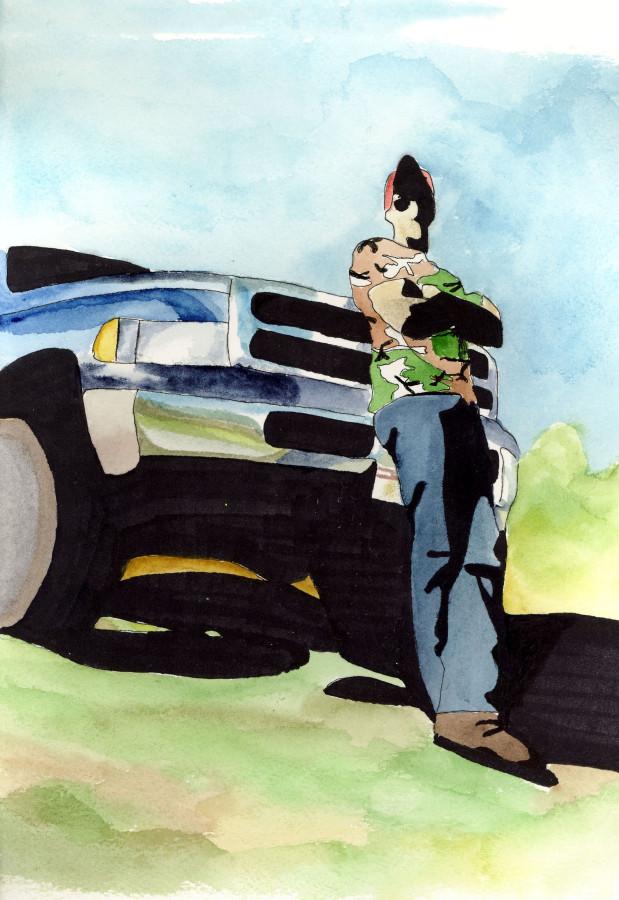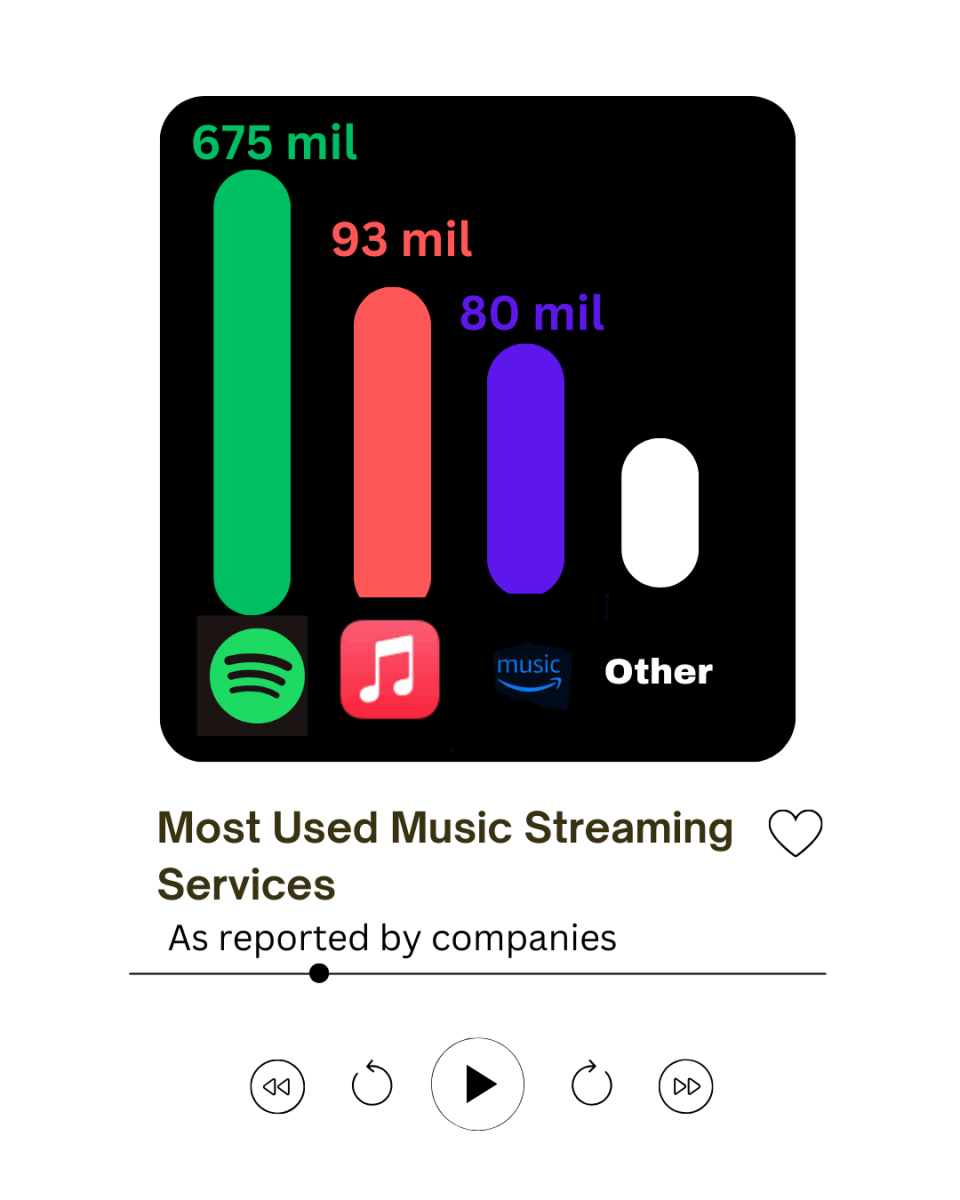On a hot summer night in Libertyville, the sun slips toward the horizon, fishing poles rattle in the back of a beat up old pickup on the way down a dirt road, and country music flows from the sullied old radio in the dashboard. This scene is a summertime fantasy for a new crop of high schoolers here at Libertyville — a group I like to call the Villebillies.
It’s important to distinguish Villebillies from true Copenhagen-spitting rednecks. Villebillies tell themselves they live a blue-collar lifestyle because they hop in their Jeeps and cruise to Bass Pro Shops once a week and often fail to realize that ragged blue jeans don’t always come that way when you buy them. I’m not saying that all country music aficionados around here are phonies — I’ve seen an LHS student catch and cook a squirrel with his bare hands (you know who you are)– but the hefty majority wouldn’t know bluegrass from a blue gill.
This new species is taking over Libertyville at a frightening clip. With summer approaching, I would like to spend a little time characterizing these creatures; they’ll sneak up and infest your household faster than you can say Jason Aldean.
Appearance: Villebillies are one of Mother Nature’s sneakiest creatures. They can be hard to spot; their full-body camouflage allows them to blend in with their surroundings. Another clear indication of the species is their trademark jorts (that’s jean shorts, for anyone who is more comfortable on this side of the Mason-Dixon), exposing male thigh that makes most people cringe. (Some female Villebillies are inexplicably turned on by leg pubes and pale flesh.) If they aren’t clad in camo, Villebillies will often dress like farmers in the heartland of Nebraska, even though the closest they’ve come to actually farming was walking past the produce section in Mariano’s. Some will also drape themselves in Confederate flags, ignoring the fact that it’s undeniably racist. Many male Villebillies will also attempt to grow thick beards, but their feeble facial efforts usually cause them to look like either a Spanish conquistador or the exterior of a peach.
Habitat: The best place to locate a Villebilly is anywhere you can hear country music. Many Villebilly hunters have been known to scatter speakers blaring country to lure in their prey. Once they take the bait, hunters will reel in their Florida Georgia Line and admire their prize. Hunting Villebillies used to be illegal, but due to their recent resurgence, the EPA now encourages it to control the population. Villebillies are very easily confused when it comes to habitat; many forget that “suburb of Chicago” is not synonymous with “rural Alabama.” Villebillies thrive during the “Long Hot Summer”, when the weather is “Sunny and 75” and they can roll their windows down and “Cruise.” The months of May through September form the crest of the Villebilly population graph, and by the winter, almost all have died out.
Behavior: It’s the behavior of the Villebillies that separates them from the rest of the Illinois crowd. They’re known to emanate a series of mating calls, the most popular and effective one is “Yee-haw!” To pass the time, Villebillies will drop lines in a fishing pond to spend the evening. Of course, once they catch something, they’ll just snap an Instagram picture and call it a night. They also cherish country concerts, especially Country Thunder — one of the only places it’s accepted to smell so foul that having beer poured on you is an aesthetic improvement. Villebillies treasure home-cooked southern meals for food, but since “collard greens” sounds more like a golf course than a vegetable to most people around here, they’re forced to settle for McDonald’s. During the week, Villebillies spend the sweltering dog days out in the field in the tractor. Just to be clear: by “out in the field” I mean “in the basement,” and by “tractor” I mean “La-Z-Boy.” And even if you can’t see the Villebilly population closing in on you, you just have to listen — you can hear their ear drum-rattling trucks from a suburb mile away.
When dealing with Villebillies, remember: they’re more afraid of you than you are of them. If they are getting a little too friendly for your comfort, crank up some rap music. You’ll hear mutterings of “This ain’t true music,” as their Timberlands thump back to their mud-coated pickups. Another common repellent is to move closer to the city. Villebilles grow weaker as they head to civilization, and by the time you see the Chicago skyline, they will perish. If all else fails, and you feel like you’re transforming into a Villebilly yourself, call 1-800-NO-TEETH, an organization that will slow your spiral into hickdom. When summer comes, we’re going to see a flood Villebillies — I can already hear the Thunder rolling in.









![Senior River Thompson joins the Jazz Ensemble by singing “That Old Black Magic” by Mercer and Arlen Arr. Mark Taylor, along with senior Annie Brody on guitar and junior Thomas Teixeira on bass, earning big applause. “[The concert had] great energy because it's the last [jazz concert] of the year,” Brody said.](https://www.lhsdoi.com/wp-content/uploads/2025/04/Eight-That-Old-Black-Magic-1200x800.jpg)
![Mr. Abullh Ali, manager/assistant, helps open Queen Yemeni Coffee in downtown Libertyville at 606 North Milwaukee Ave. With the help of employees such as manager and LHS senior Yousef Taha, they are able to bring the Yemeni and Ethiopian culture to Libertyville by using their Queen spices, cinnamon and cardamom in their drinks such as Adani Chai, which is inspired by Sheda, the Queen of Yemen and Ethiopia. “The history of our coffee [is] a long history and we believe that Yemen and Ethiopia started the coffee and we are bringing something unique to the community,” Mr. Ali said.](https://www.lhsdoi.com/wp-content/uploads/2025/04/Photo-1-1200x800.jpg)




